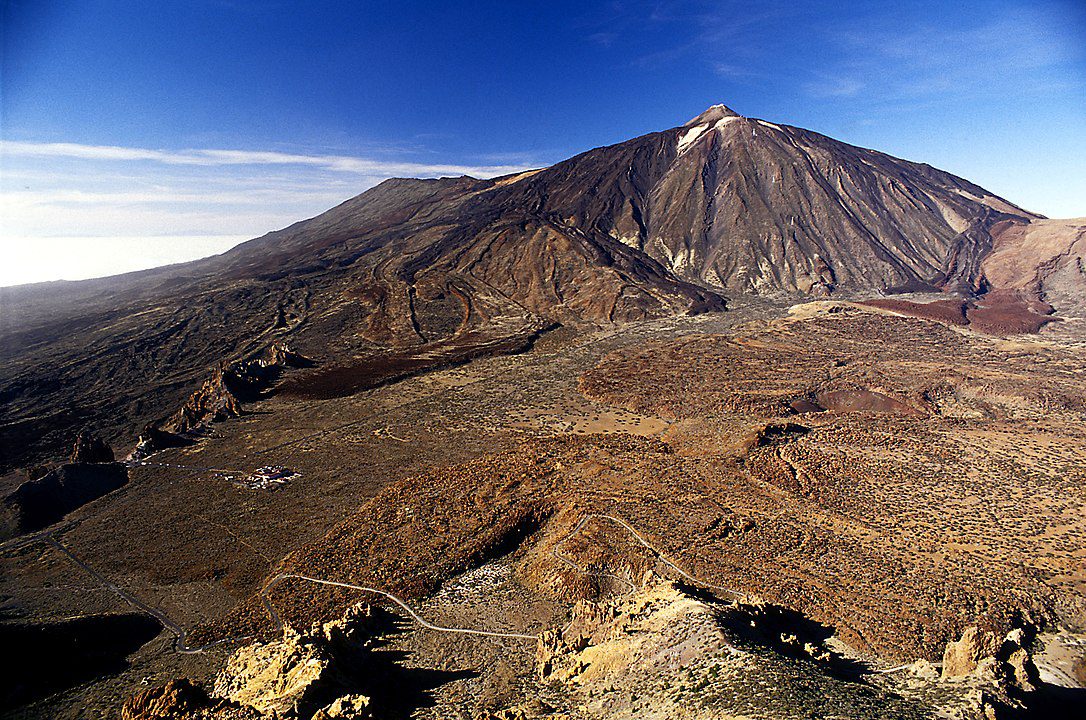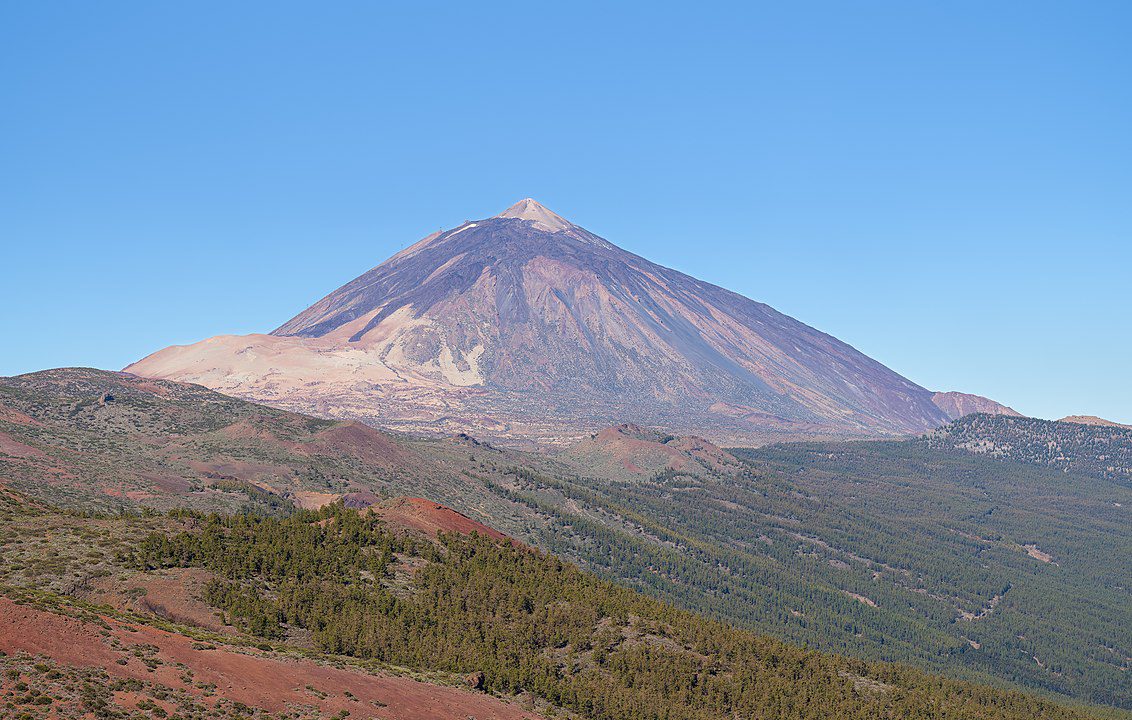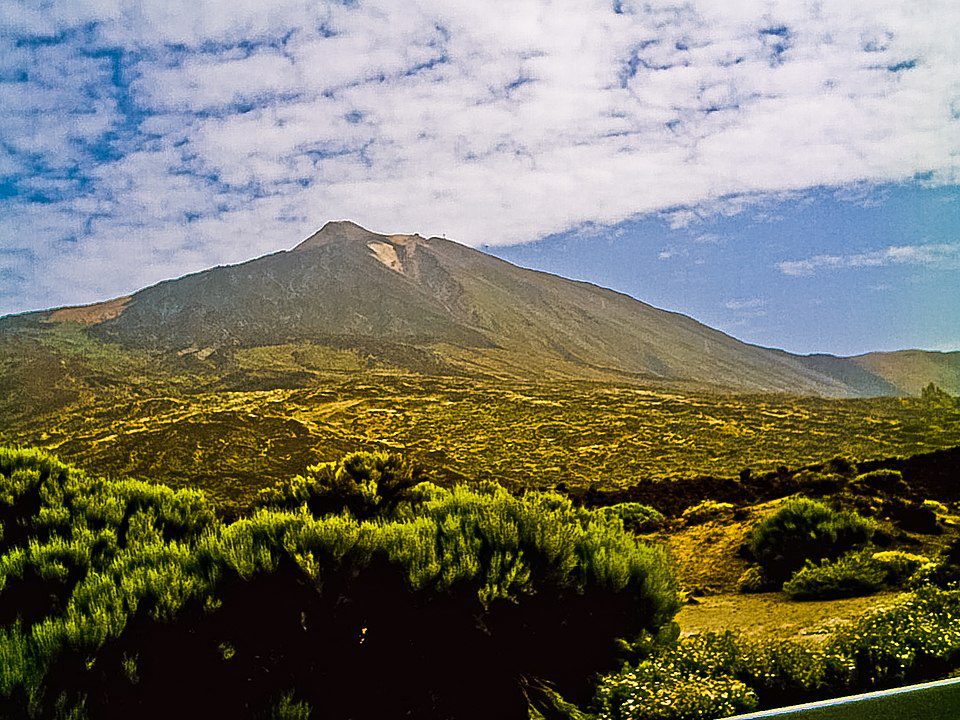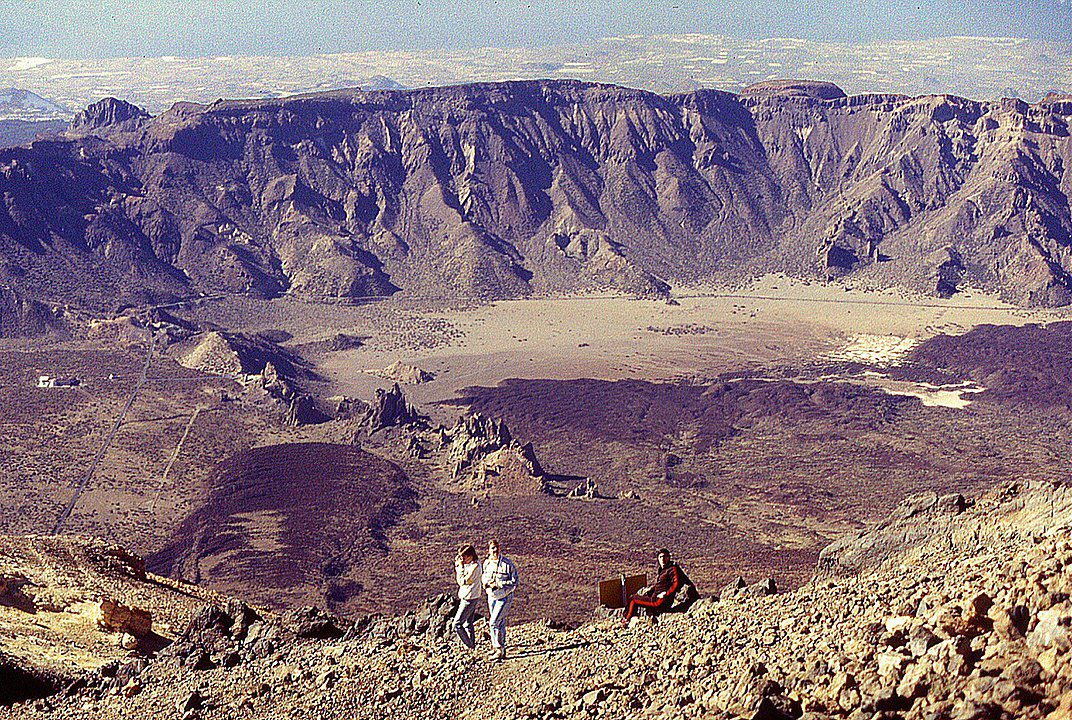
Mount Teide photo by Falk2 Wikimedia
Top 10 Amazing Facts about Mount Teide
Tenerife in the Spanish Canary Islands is home to Teide, sometimes known as Mount Teide, which is a volcano. At 3,715 m (12,188 ft) above sea level, its top is both Spain’s highest point and the highest point on any of the Atlantic island chain’s inhabited islands.
Teide is the third-highest volcano in the world when measured from the ocean floor; according to UNESCO and NASA, it is also the third-tallest volcanic edifice on Earth. Teide’s height is 7,500 m (24,600 ft) if measured from the ocean floor. Teide, however, was only formed 170,000 years ago as a result of volcanic activity that followed a disastrous landslide.
The real location of Teide’s base is in the Las Caadas crater, which is the remnant of an earlier, eroded extinct volcano, and is located at a height of around 2,190 meters (7,190 feet) above sea level. Tenerife is the world’s tenth-highest island due to Teide’s height above sea level. An active volcano is Teide.
Discover walks offer Private Tours and Daytrips and you can find them Here
And other tours can also be found Here
Here are the Top 10 Amazing Facts about Mount Teide
1. Mount Teide the volcano has been dormant
Active volcano Teide’s most recent eruption occurred in late 1909 from the El Chinyero vent on the Santiago rift’s northwest side. The United Nations Committee for Disaster Mitigation designated Teide as a Decade Volcano in recognition of its history of catastrophic eruptions and proximity to numerous significant towns, the closest of which are Puerto de la Cruz, Garachico, and Icod de los Vinos. Teide, Montaa Blanca, and Pico Viejo make up Tenerife’s Central Volcanic Complex.
2. It has been the tallest peak and highest point on an Atlantic Island that is above sea level and the World’s fourth tallest Volcano

Teide on Tenerife from northeast Photo by Thomas Wolf, Wikimedia
Spain’s tallest peak has been Mount Teide, which has a height of 12,188 feet. In addition, it is Western Europe’s tallest mountain outside of the Alps.
The volcano throws a huge shadow in the shape of a triangle over the surrounding area every morning around sunrise.
The length of the shadow is more than 3% of the distance between Florida and the Canary Islands in the United States, which is what is most amazing.
When looking up at Mount Teide from the ocean’s surface, it is 24,600 feet tall. This places it as the fourth-highest volcano in the world, according to UNESCO and NASA.
3. Mount Teide has been home to Archeological sites
Around Mount, Teide is a park with a similar name. Several important historical and cultural sites can be found in the park.
More than 1,000 archeological sites from the oldest tribe to live in this area can be found here. An indigenous tribe called the Guanches inhabited the area. They left behind cultural artifacts like the pyramids they used as temples. The Guanches thought of the mountain as the gateway to hell.
There are a total of six pyramids, and travelers like visiting each one.
4. Mount Teide shelters an abundance of Flora

Part of the volcano Teide on Tenerife photo by dan Kearney Wikimedia
Teide would probably be characterized as a desert landscape if you were not an expert in biology. On the steep slopes, however, 168 different plant species can be found because of the rich volcanic soil. One of the most emblematic plants is Echium Wildpretii, which is very well-known to everybody who has ever visited the area. It is a 2-4 meter tall herbaceous plant. Between 1000 and 2000 meters above sea level, the ring is bordered by lovely pine forests. Actually, everywhere but the highest points lacks flora.
5. It has been home to 1400 Animal species
When you consider Teide National Park’s harsh environment, it could be challenging for you to comprehend how many species call it home. Actually, this region is home to over 1400 different animal species, of which about 40% are local and exclusive to this region. Most of the species are insects. There are, however, several additional species, such as birds, rats, and lizards. One advantage is the absence of dangerous animals in the area.
6. Mount Teide has been considered the best place to see the Night sky
Have you heard that one of the best places to observe the Milky Way and the stars in the world is the Canary Islands? Some of the most amazing night sky images have really been captured on Mount Teide’s peak. It was for this reason, among others, that the Observatorio del Teide, one of the most renowned global observatories, was built in 1964 at a height of 2390 meters.
Later, because of the ideal conditions in the area, the Roque de Los Muchachos Observatory was constructed on the neighboring island of La Palma.
7. Its summit has about 30 variety of routes to be reachable
There are numerous routes that lead to Mount Teide’s peak. These routes were first made known to Sir Edmund Scory in the 17th century. Every sort of hiker can find a trail in Tenerife’s Teide National Park, which offers over 30 distinct options. The Teide hiking trails, which go to Mount Teide’s 12,188-foot summit, offer some of the most breathtaking views. Scory describes the most effective paths and challenges to be faced when climbing hills in his book.
8. There is a small layer of snow on Mount Teide

Mount Teide photo by Falk2 Wikimedia
Few places in the world experience simultaneous snowfall and a tropical climate. The cause for one of them is Mount Teide’s elevation above sea level.
At a height of 2371 m, ten out of the twelve months of the year could have temperatures below zero. August and September are the only months with average highs above zero. So it makes sense that Mount Teide experiences a little covering of snow far more frequently than you may suppose.
Practically, the volcano’s highest summits are covered in snow for a large portion of the winter. The island does not get much precipitation, nevertheless.
9. Teide is the most popular National Park in Spain
The mountain and park are situated on an area that is almost 47,000 acres large. Teide is the most well-known natural wonder in Spain, the most well-known national park in Europe, and as of 2015, the eighth most well-known wonder in the entire world. It receives over 3 million visitors annually. 2016, exceeding all prior records, saw 4,079,823 tourists and visitors arrive in the city.
10. It’s believed that one day Mount Teide could explode once more

Caldera of Mount Teide photo by Mike McBey Wikimedia
A few years ago, Mount Teide’s northeast face had a fracture as a result of the mountain’s heightened seismic activity. It is believed that as a result of these actions, the mountain is physically unstable.
Given that people live nearby the mountain, there have been conflicting reports from scientists regarding the likelihood of the next eruption, the extent of its destruction, and the risk it presents.
Related Articles
Top 10 Facts about Teide in Tenerife
Top 10 Interesting Facts about Magic Fountain
Planning a trip to Paris ? Get ready !
These are Amazon’s best-selling travel products that you may need for coming to Paris.
Bookstore
- The best travel book : Rick Steves – Paris 2023 – Learn more here
- Fodor’s Paris 2024 – Learn more here
Travel Gear
- Venture Pal Lightweight Backpack – Learn more here
- Samsonite Winfield 2 28″ Luggage – Learn more here
- Swig Savvy’s Stainless Steel Insulated Water Bottle – Learn more here
Check Amazon’s best-seller list for the most popular travel accessories. We sometimes read this list just to find out what new travel products people are buying.










